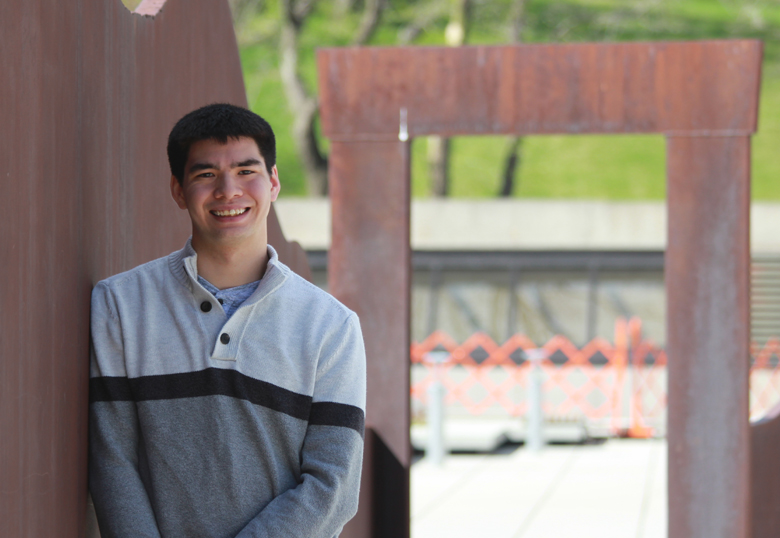A collaboration between University of Lethbridge and international scientists has led to a prestigious publication for doctoral student Ryan Kung (BSc ’15).
Under the supervision of Dr. Stacey Wetmore, Kung’s research into how the structure of a DNA damaging agent affects biological consequences was recently published in the journal Chemical Research in Toxicology.
“It was encouraging and exciting that something I did a lot of work on was published and added knowledge to the field,” says Kung. “I’m really thankful that Stacey set up this collaboration for me and allowed me to conduct this research and expand my knowledge in this area.”
The research involved studying DNA damage related to a class of compounds called aromatic amines, which come from many different sources in the environment, such as vehicle exhaust, oil refining and tobacco smoke.
“We looked at DNA damage that was very similar to an aromatic amine that we know is very toxic and causes bladder cancer. We wanted to know if it would behave the same way if we changed the structure slightly,” says Kung.
Dr. Richard Manderville, at the University of Guelph, and Dr. Shana Sturla and Florence Berger, at ETH Zürich in Switzerland, created the damaged DNA and marked it with a fluorine atom. The presence of the fluorine atom allowed Kung to gain critical information about the structure of the damaged DNA using both computational and experimental methods.
“Their help was instrumental in the making of the damaged DNA,” says Kung. “The collaboration and the ability to work with these people and learn from them was a great opportunity and I really enjoyed that.”
At the U of L, Kung and Wetmore worked with other researchers within the Canadian Centre for Research in Advanced Fluorine Technologies (C-CRAFT). This state-of-the-art facility provided the high-quality equipment that allowed Kung to make a significant contribution to the research. Kung and Wetmore used powerful computers to model what was happening at the microscopic level.
“The experimental information collected about these systems is complicated and difficult to interpret. Computer modelling therefore plays a critical role in allowing us to understand the effects of DNA damage,” says Wetmore. “The modelling expertise that Ryan has developed thus far in his graduate studies makes collaborations with international, interdisciplinary research groups possible and successful.”
In collaboration with Tony Montina, who is the U of L’s nuclear magnetic resonance (NMR) facility manager, Kung also looked at the samples of damaged DNA using NMR spectroscopy.
“The use of fluorine NMR in this project provided a powerful piece of experimental evidence that could be used to confirm the computational work done by Ryan,” says Montina. “This project represents an excellent example of the high quality transdisciplinary research being done by C-CRAFT and the diversity of training that students like Ryan are able to obtain while carrying out graduate studies at the U of L.”
“Using a combination of computational and experimental techniques, we found that there could be two structures, one of them was very similar to undamaged DNA and likely would not have a huge impact on the body,” says Kung. “The other structure we found distorted the DNA more and would likely have more serious consequences. Even a small change in the structure of DNA can have a big biological impact.”
Originally from Linden, a village northeast of Calgary, Kung came to the U of L intending to eventually enter education. He knew he wanted to study science but felt equally drawn to mathematics and chemistry. He flipped a coin and chemistry won.
“As an undergraduate, I was encouraged to do research with different groups and one that really fascinated me was Dr. Wetmore’s computational chemistry,” says Kung. “We focus on the micro level so we can understand small changes. Those small changes can have large effects, such as cancer and other immune disorders. You can’t always predict from the small change what’s going to happen in the large system.”
Kung has been awarded a Natural Sciences and Engineering Research Council (NSERC) Alexander Graham Bell Canada Graduate Scholarship, an NSERC Alexander Graham Bell Canada Graduate Scholarship Doctoral Program, Alberta Innovates Technology Futures (AITF) Graduate Student Scholarship and a School of Graduate Studies fellowship.
